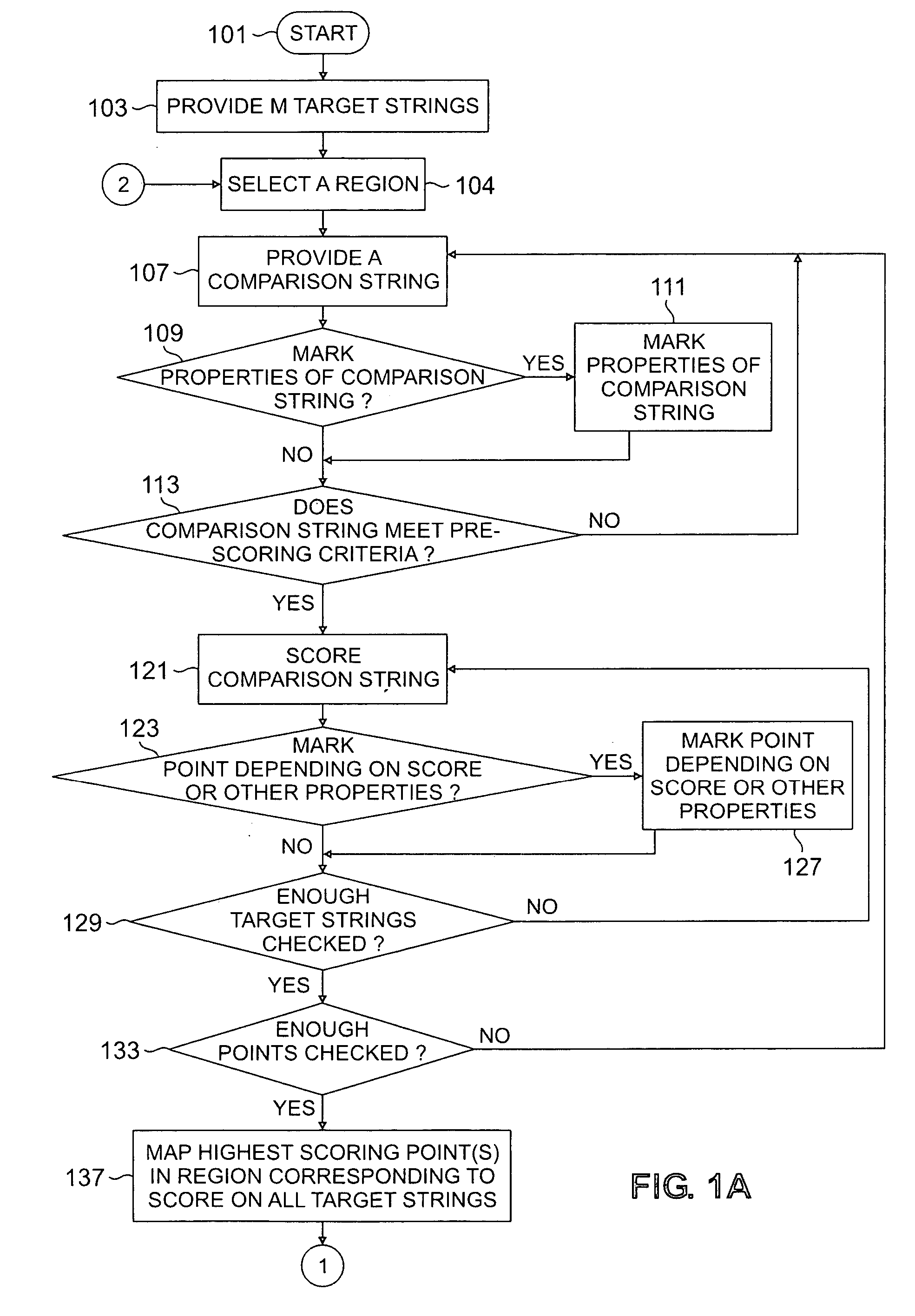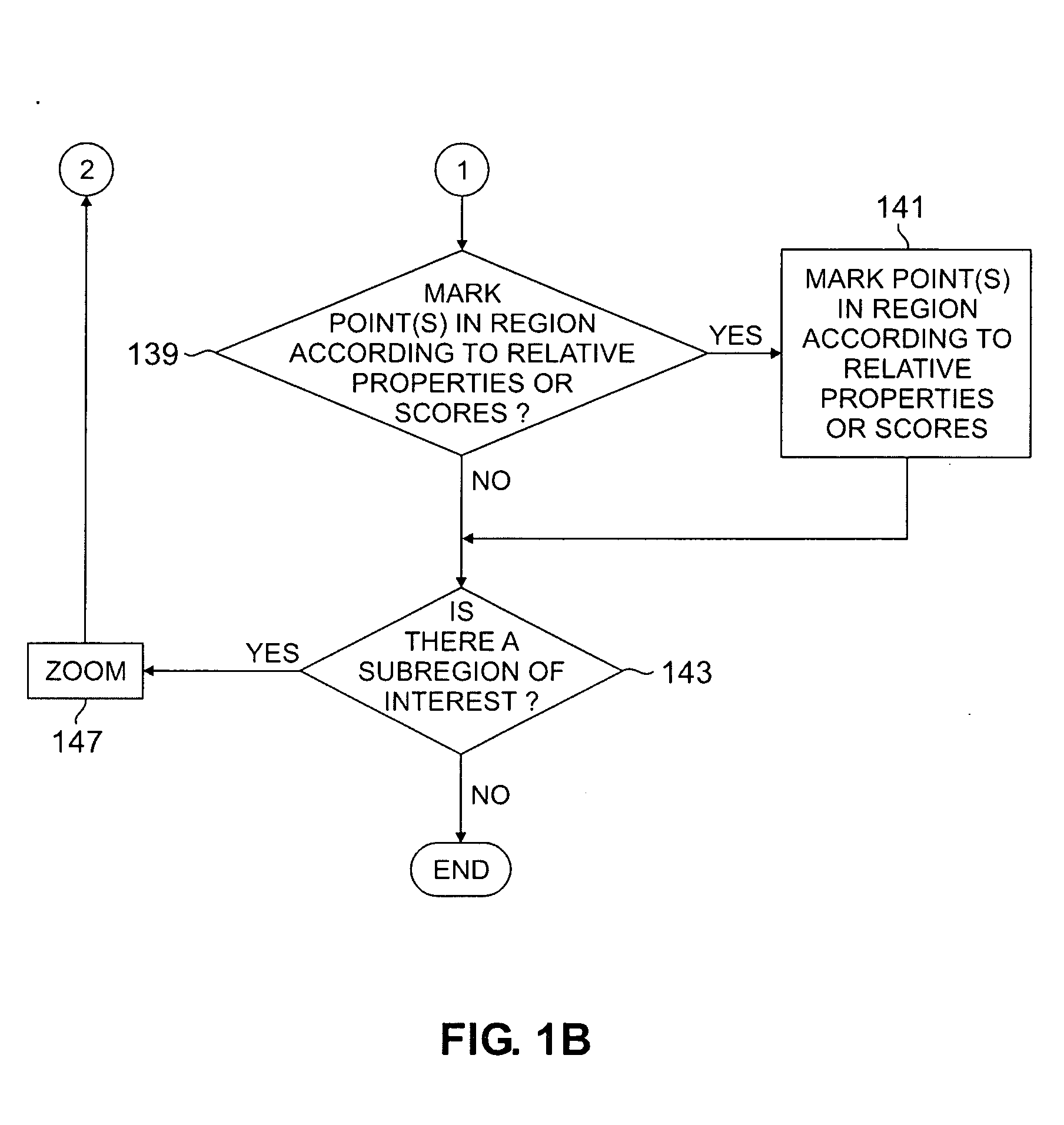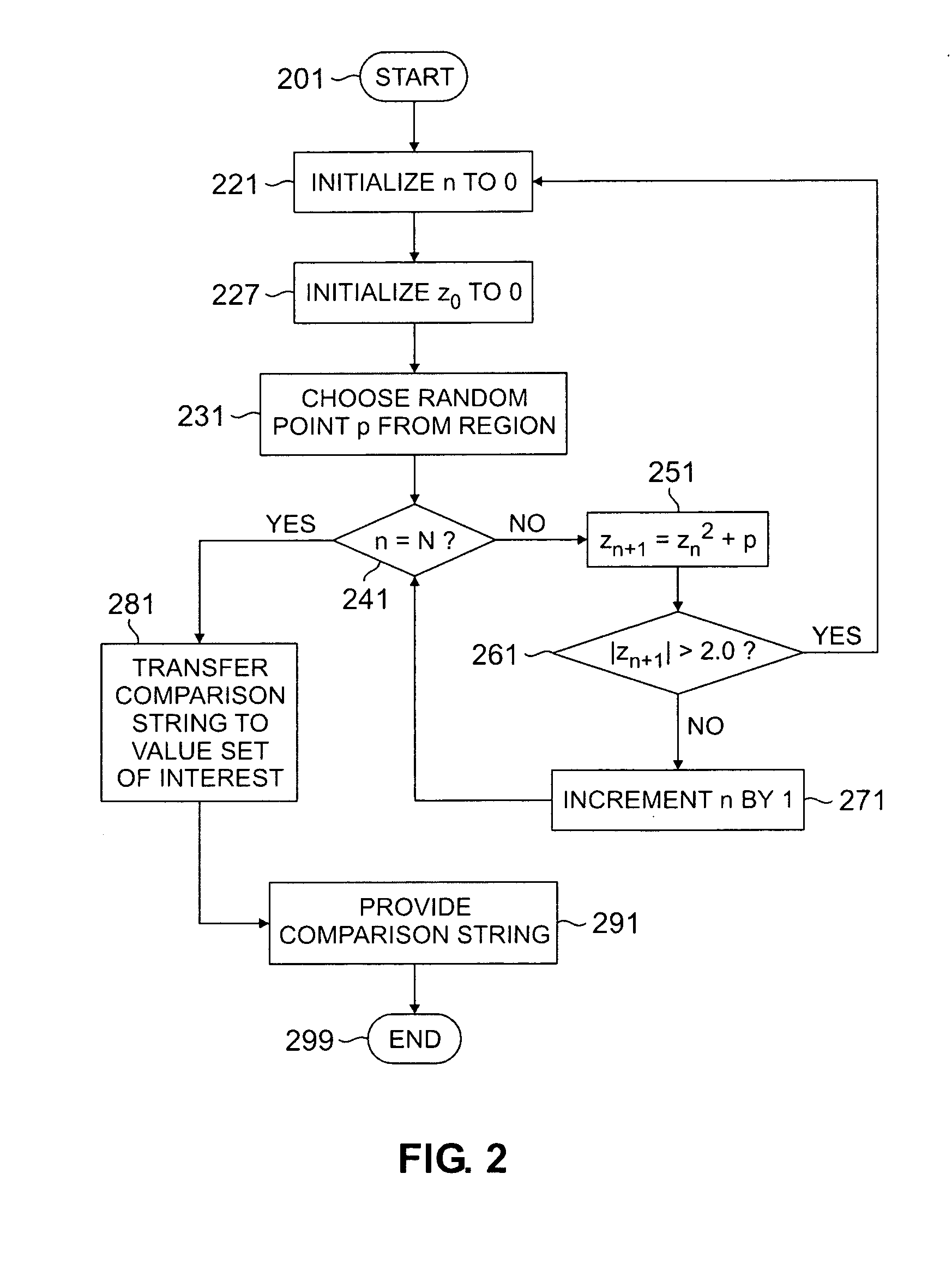Method for studying cellular chronomics and causal relationships of genes using fractal genomics modeling
a genomics and fractal technology, applied in the field of dataset manipulation, storage, modeling, quantification and quantification, can solve the problems of not being able to easily accommodate missing values, not being able to fingerprint and visualize an entire dataset, and high computational requirements for these techniques
- Summary
- Abstract
- Description
- Claims
- Application Information
AI Technical Summary
Problems solved by technology
Method used
Image
Examples
example 1
Evidence of Scale-Free Genetic Network and Identification Biomarkers in Down's Syndrome
[0102] This example demonstrates the use of FGM both to provide evidence of scale-free genetic network in Down's Syndrome and to identify specific small gene groupings, consisting of 7 genes, that can serve as biomarkers relating to Down's Syndrome.
[0103] In this study, FGM was used to model small groups of 7 genes from much larger microarrays (Affymetrix Human Genome U95A chips) consisting of 12,558 genes. The data was derived from fibroblasts of 4 subjects with and 4 subjects without Down's Syndrome—totaling 8 subjects. The number of genes within the groups, in this case 7, was decided using the criteria of picking a relatively small number—in the range of 5-20—that when divided into 12,558 yields a real number without a remainder. Thus, arbitrarily choosing the gene groups by grouping the genes as they appeared on the gene chip, 1,794 7-gene groups were established. Consequently, 14,352 (1,79...
example 2
Identification of Biomarkers in Human Immunodeficiency Virus (HIV) Infection
[0113] In this example, FGM was used to model small groups of 14 genes from much larger microarrays (Affymetrix Human Genome U95A chips) consisting of 12,558 genes. The data was derived from the brain tissue of 5 HIV-1 negative and 4 HIV-1 infected subjects—totaling 9 subjects. The number of genes within the groups, in this case 14, was decided using the criteria of picking a relatively small number—in the range of 5-20—that goes evenly into 12,558. Thus, arbitrarily choosing the gene groups by grouping the genes as they appeared on the gene chip, 897 14-gene groups were established. Consequently, 8,073 (897 gene groups * 9 subjects) target strings, M, each with 14 gene expression values, were provided for FGM analysis.
[0114] Comparison strings were generated for each target string, as previously described. These FGM models were scored based on their overall Pearson correlation, using a minimum cutoff corr...
example 3
Genetic Network and Biomarkers in Leukemia
[0118] Input data from the study produced by Golub et al. (Golub T. R., et al., Science, Vol. 286, pp. 531-536, 1999) are used in this example in order to further demonstrate the utility of the present invention. The data in the Golub study contained Affymetrix gene expression data for 7070 genes acquired from patients diagnosed with either acute lymphoblastic leukemia (ALL) or acute myeloid leukemia (AML). The data was composed of a training set of data from 27 ALL patients and 11 AML patients to develop diagnostic approaches based on the Affymetrix data and an independent set of 34 patients for testing.
Genetic Network in the Clinical Expression of Leukemia
[0119] In order to determine what kind of genetic network is involved in the clinical expression of leukemia, the more than 7,000 gene expression values in the Golub data were broken into groupings of 5, 7, and 10 genes based only on the order in which the genes were arranged on the A...
PUM
| Property | Measurement | Unit |
|---|---|---|
| time point | aaaaa | aaaaa |
| time points | aaaaa | aaaaa |
| size | aaaaa | aaaaa |
Abstract
Description
Claims
Application Information
 Login to View More
Login to View More - R&D
- Intellectual Property
- Life Sciences
- Materials
- Tech Scout
- Unparalleled Data Quality
- Higher Quality Content
- 60% Fewer Hallucinations
Browse by: Latest US Patents, China's latest patents, Technical Efficacy Thesaurus, Application Domain, Technology Topic, Popular Technical Reports.
© 2025 PatSnap. All rights reserved.Legal|Privacy policy|Modern Slavery Act Transparency Statement|Sitemap|About US| Contact US: help@patsnap.com



